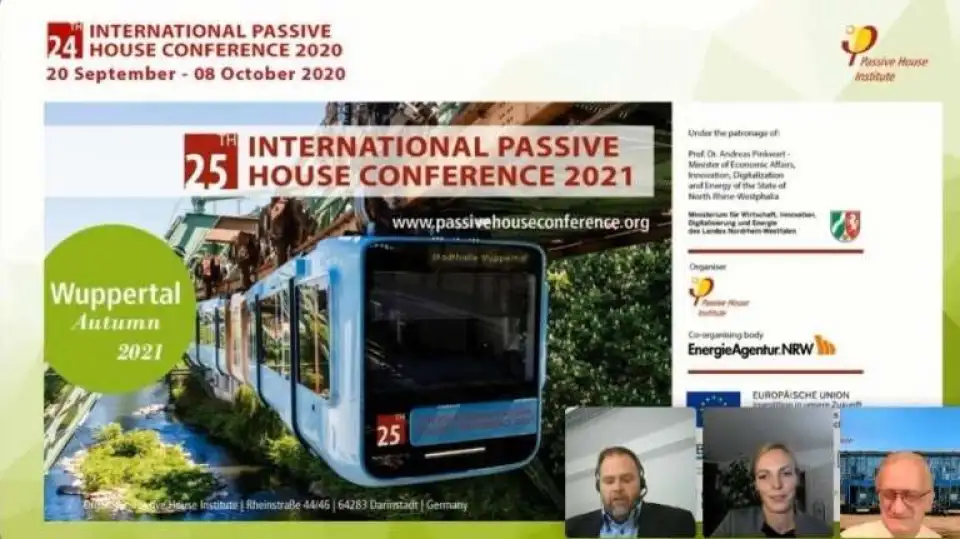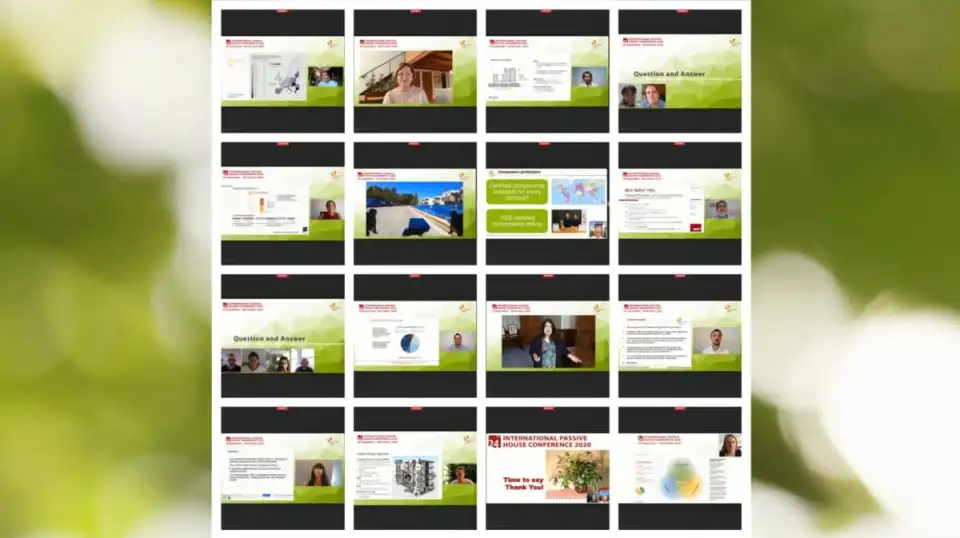
The Passive House Institute’s 24th Annual International Passive House Conference came to an end last Thursday, October 8, with sessions on Passive House buildings around the globe and Passive House retrofits in Germany, as well as a plenary event that nicely encapsulated the overarching theme for this year’s conference: “Building the Future – Sustainably!” The theme is also an indication of the sentiment one finds throughout the Passive House community, which is a peculiar combination of frustrated urgency and cautious optimism.
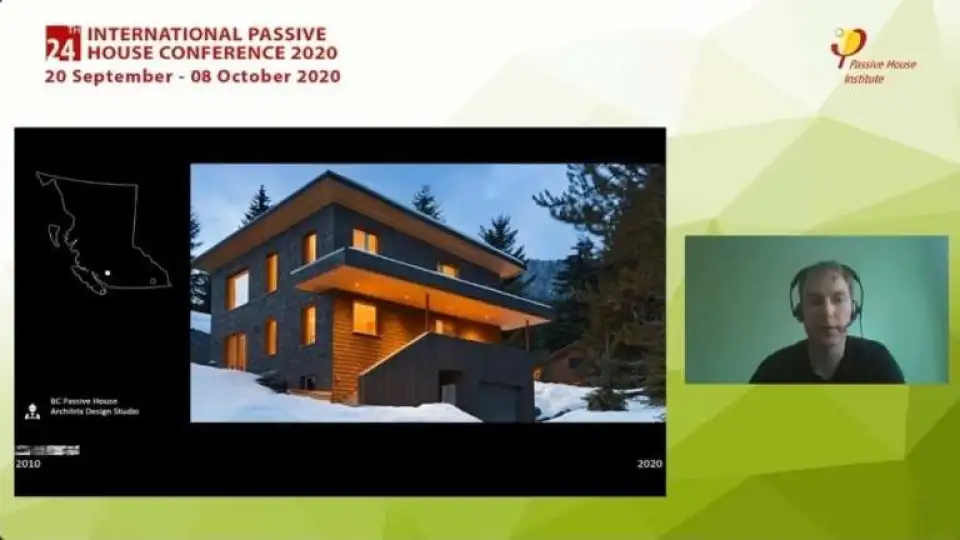
The former stems from the recognition that some of the most cataclysmic effects of climate change are just beginning to be made manifest. Critical ecosystems are struggling with the ecological equivalent of allosteric overload, sea levels are rising, and populations from affected regions are being displaced. Meanwhile, the COVID pandemic has made ventilation an important topic in the mainstream press, and even casual followers of the news are wondering if sitting in stagnant air all day is really that good of an idea.
The latter is a bit more difficult to parse out. On the one hand, there is a gnawing specter of cynicism that comes from years of figurative trench warfare going up against well-funded armies of lobbyists who diligently work to prevent industry transformation or to preserve archaic zoning laws. On the other, it seems as though we are reaching a tipping point where obfuscation or delay ceases to be possible any longer, and that the vast majority of people are beginning to acknowledge not only that changes need to be made, but that there is no time for vague idealism. If we are not going to conduct business as usual anymore, they want to know what the specific alternatives are going to be.
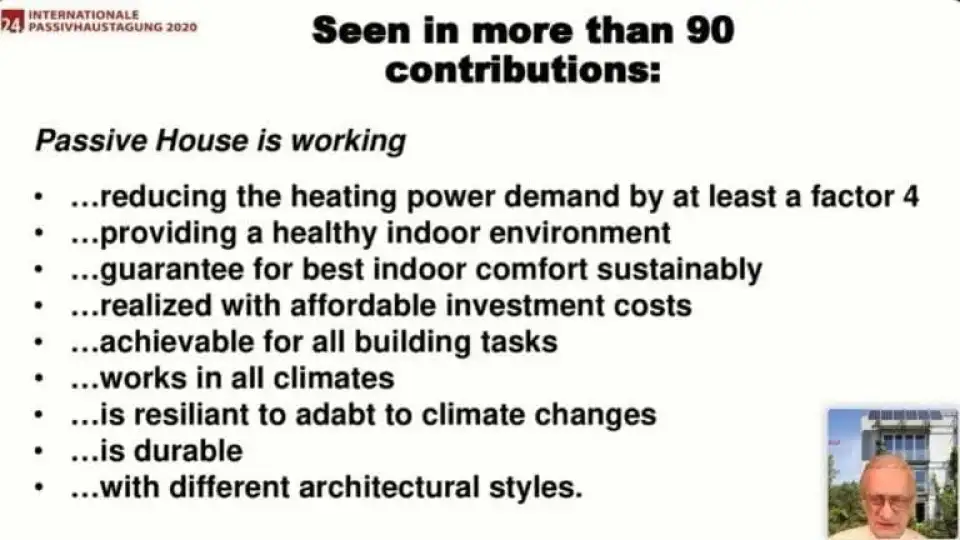
At this point, everyone reading this is either thinking or screaming: “Passive House!”
There’s good reason for this, of course. As Giorgia Tzar of the Passive House Institute described in her must-watch presentation during Session 14, Passive House goes well beyond ventilation and sustainability. By her count, it promotes at least ten of the United Nations’ 17 Sustainable Development Goals (SDG), including:
No Poverty (SDG 1)
Good Health and Well-Being (SDG 3)
Quality Education (SDG 4)
Affordable and Clean Energy (SDG 7)
Decent Work and Economic Growth (SDG 8)
Industry, Innovation, and Infrastructure (SDG 9)
Sustainable Cities and Communities (SDG 11)
Responsible Consumption and Production (SDG 12)
Climate Action (SDG 13)
Partnerships for the Goals (SDG 17)
More importantly, it is not some fevered pipedream of a building scientist geek. It is not just a model that works well on paper. It long ago crept off the drawing boards, and Passive House buildings are now providing real homes to real people. There are decades of hard data. There are dozens of online courses for consultants and designers each year. There are hundreds of clips of tutorials, blogs, webcasts, and classes for tradespeople. It is a specific solution that can bring about radical improvements in building efficiency, health, and the use of resources.
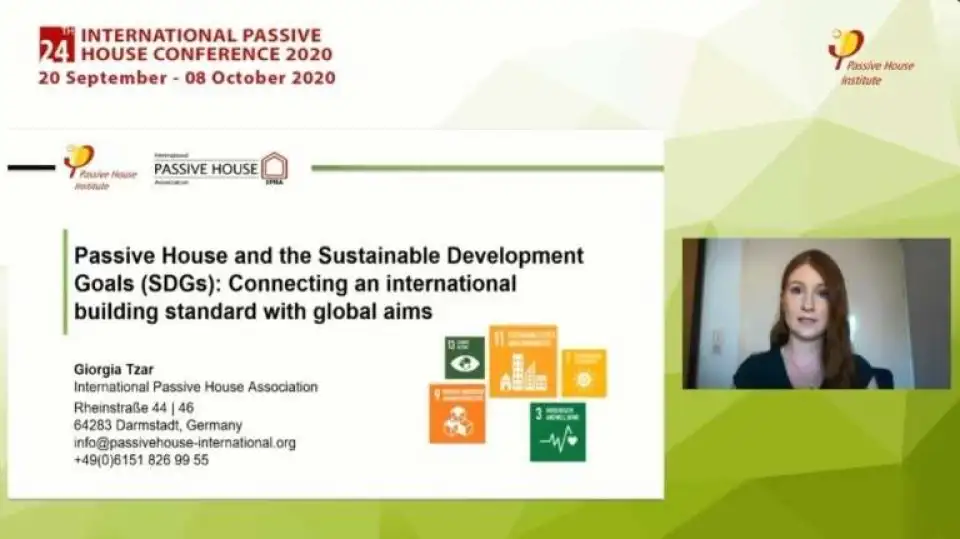
These features of Passive House were on regular display during the conference, but the more important message was that, despite being a specific solution, it is not a brand or a product; it is a standard that lends itself to constant iteration and perpetual improvement. With governments around the world searching for ways to become carbon neutral by a specific date—whether it’s 2060 (China), 2050 (the European Union, New York), 2045 (California), 2040 (Austria), or even 2030 (Glasgow)—relying on a policies that encourage Passive House design allows legions of brilliant people who would otherwise each be attempting to design a unique solution to a shared problem to cooperate and collaborate often via open source software. It offers them at least a partial roadmap that still allows amendments to address unique challenges or to take advantage of unique resources.
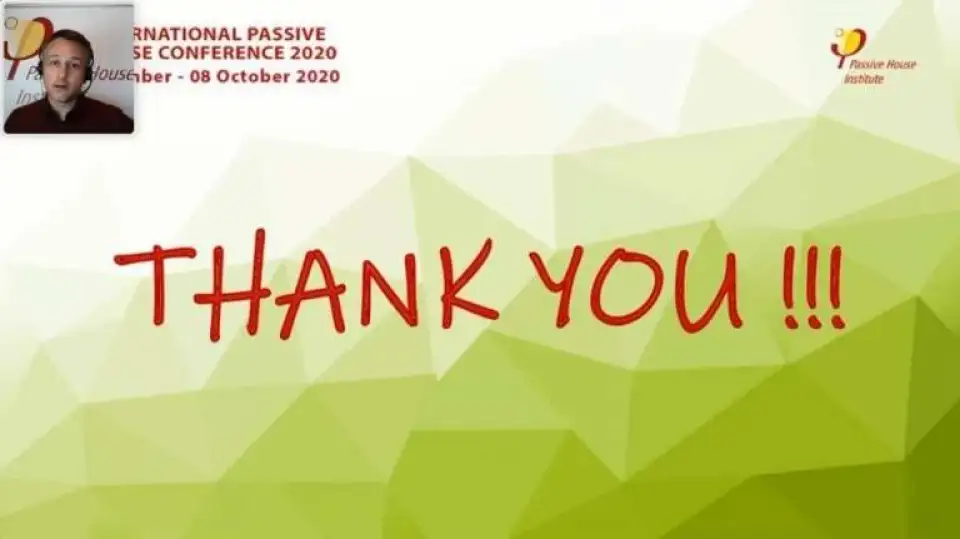
There was yet another takeaway from the conference that became resoundingly clear: This is all happening now. To echo what Monte Paulsen said during this past week’s Passive House Happy Hour, young Passive House enthusiasts years from now will look back at those who are part of the community now, in 2020, a little begrudgingly because this is the time when the foundations of the future are being constructed. Moreover, it is a global phenomenon. Whether in Gaobeidian, Melbourne, New York City, Wörgl, or Glasgow, the Passive House community is growing, thriving, and building the future—sustainably.
